-
 Bitcoin
Bitcoin $82,382.7890
8.63% -
 Ethereum
Ethereum $1,641.2351
14.30% -
 Tether USDt
Tether USDt $0.9996
0.04% -
 XRP
XRP $2.0194
13.14% -
 BNB
BNB $578.7191
5.82% -
 Solana
Solana $117.2636
12.58% -
 USDC
USDC $0.9999
-0.02% -
 Dogecoin
Dogecoin $0.1576
11.63% -
 TRON
TRON $0.2393
4.79% -
 Cardano
Cardano $0.6222
11.65% -
 UNUS SED LEO
UNUS SED LEO $9.3819
2.37% -
 Chainlink
Chainlink $12.4295
14.50% -
 Toncoin
Toncoin $3.0759
2.88% -
 Avalanche
Avalanche $18.2445
12.64% -
 Stellar
Stellar $0.2373
7.30% -
 Sui
Sui $2.1940
13.81% -
 Hedera
Hedera $0.1688
15.37% -
 Shiba Inu
Shiba Inu $0.0...01183
10.74% -
 MANTRA
MANTRA $6.8029
8.92% -
 Bitcoin Cash
Bitcoin Cash $299.9535
11.17% -
 Litecoin
Litecoin $75.1862
8.30% -
 Polkadot
Polkadot $3.5839
5.09% -
 Dai
Dai $1.0000
0.00% -
 Bitget Token
Bitget Token $4.3353
6.12% -
 Ethena USDe
Ethena USDe $0.9989
0.03% -
 Hyperliquid
Hyperliquid $13.8110
16.03% -
 Pi
Pi $0.5986
7.26% -
 Monero
Monero $203.8121
4.21% -
 Uniswap
Uniswap $5.3052
12.19% -
 OKB
OKB $53.4436
6.75%
What is the mining process of blockchain?
Blockchain mining verifies transactions, adding them to a public ledger via solving complex cryptographic puzzles. Miners compete for block rewards and transaction fees, with profitability influenced by hardware, energy costs, and cryptocurrency value.
Mar 19, 2025 at 03:55 am

Key Points:
- Blockchain mining secures the network by verifying and adding transactions to the blockchain.
- The process involves solving complex cryptographic puzzles using specialized hardware.
- Miners compete to solve these puzzles first, earning block rewards and transaction fees.
- Different blockchains use different consensus mechanisms, influencing the mining process.
- Mining profitability depends on factors like hardware costs, electricity prices, and cryptocurrency value.
What is the Mining Process of Blockchain?
Blockchain mining is the process by which new transactions are verified and added to the blockchain, the public ledger that records all cryptocurrency transactions. This process is crucial for maintaining the security and integrity of the blockchain network. Think of miners as the guardians of the blockchain, ensuring its accuracy and preventing fraudulent activities.
The core of blockchain mining involves solving computationally intensive cryptographic puzzles. These puzzles are designed to be extremely difficult to solve, requiring significant computing power. This difficulty ensures the security of the network, making it computationally infeasible for malicious actors to alter the blockchain's history.
Miners use specialized hardware, such as Application-Specific Integrated Circuits (ASICs), to solve these puzzles. ASICs are designed specifically for cryptocurrency mining and are significantly more efficient than general-purpose computers. The race to solve the puzzle is at the heart of the mining process.
The first miner to successfully solve the cryptographic puzzle gets to add the next block of verified transactions to the blockchain. This block contains a batch of recent transactions, and adding it to the chain effectively confirms these transactions. This process is also referred to as "adding a block to the chain."
For their efforts, successful miners receive a reward. This reward typically consists of newly minted cryptocurrency (the "block reward") and transaction fees paid by users who included their transactions in the block. The block reward is a pre-determined amount that gradually decreases over time, often according to a predefined schedule.
Different blockchains employ different consensus mechanisms. The most well-known is Proof-of-Work (PoW), where miners compete to solve cryptographic puzzles. Other mechanisms, such as Proof-of-Stake (PoS), exist and offer alternative approaches to validating transactions, often without the energy-intensive mining process of PoW.
The profitability of mining depends on several factors. The value of the cryptocurrency being mined is paramount. A higher cryptocurrency value means higher potential profits. However, this must be balanced against the costs of hardware, electricity consumption, and the increasing difficulty of solving the cryptographic puzzles.
Mining pools are groups of miners who combine their computing power to increase their chances of solving a block and sharing the rewards. This strategy is especially beneficial for smaller miners who might not have the resources to mine solo profitably. Joining a pool helps them earn a steady income, even if they don't win every block.
The complexity of the cryptographic puzzles is dynamically adjusted by the network. If the network's hash rate (the total computing power) increases, the difficulty automatically increases to maintain a consistent block generation time. This ensures the network remains secure even as more miners join.
The mining process is a constant competition. Miners are continuously competing to solve the next block, contributing to the security and stability of the blockchain network. The competition ensures that the system remains robust against attacks and maintains its integrity. The system is self-regulating in this way, adjusting its difficulty based on the network's overall computational power.
The environmental impact of cryptocurrency mining, particularly with PoW systems, has been a significant concern. The high energy consumption of ASICs has led to debates about the sustainability of these systems. However, advancements in technology and the exploration of alternative consensus mechanisms are attempting to address this issue.
Different cryptocurrencies have different mining algorithms. These algorithms dictate the specific type of cryptographic puzzle that miners must solve. Some algorithms are more energy-efficient than others, and the choice of algorithm significantly influences the mining process. For instance, some coins utilize algorithms designed to be more ASIC-resistant, favoring GPU mining.
Frequently Asked Questions:
Q: Is it profitable to mine cryptocurrency at home?
A: Home mining is generally not profitable for most individuals due to high electricity costs and the intense competition from large-scale mining operations. The initial investment in specialized hardware is also substantial.
Q: What hardware is needed for cryptocurrency mining?
A: For Proof-of-Work cryptocurrencies, specialized ASIC miners are typically the most efficient. For some cryptocurrencies that use different algorithms, GPUs or even CPUs might be used, though their efficiency is usually lower.
Q: How does the blockchain prevent double-spending?
A: The blockchain's distributed and immutable nature prevents double-spending. Once a transaction is added to a block and confirmed, it becomes part of the permanent record, making it impossible to spend the same cryptocurrency twice. The cryptographic puzzle solved by miners secures this record.
Q: What is a mining pool?
A: A mining pool is a group of miners who combine their computing power to increase their chances of solving a block and earning rewards. The rewards are then distributed among the pool members according to their contribution.
Q: What are the different consensus mechanisms?
A: Proof-of-Work (PoW), Proof-of-Stake (PoS), Delegated Proof-of-Stake (DPoS), and Proof-of-Authority (PoA) are some of the prominent consensus mechanisms used in blockchain networks. Each mechanism has its own strengths and weaknesses regarding security, scalability, and energy efficiency.
Disclaimer:info@kdj.com
The information provided is not trading advice. kdj.com does not assume any responsibility for any investments made based on the information provided in this article. Cryptocurrencies are highly volatile and it is highly recommended that you invest with caution after thorough research!
If you believe that the content used on this website infringes your copyright, please contact us immediately (info@kdj.com) and we will delete it promptly.
- Ethereum (ETH) Underperforms Bitcoin (BTC)
- 2025-04-10 10:25:14
- Bitcoin Surges Above $82,000 on Tariff Pause, XRP Rallies on ETF Launch
- 2025-04-10 10:25:14
- OKX Expands Its Offerings with the Launch of USDT-Margined Perpetual Futures for GRIFFAIN and ZEREBRO
- 2025-04-10 10:20:13
- GameStop Token Price up 30% Amid Bitcoin Adoption Approach
- 2025-04-10 10:20:13
- BitMart Review: What is It?
- 2025-04-10 10:15:13
- Rain, a global platform specialising in card issuance through stablecoins, has raised $24.5m in new funding.
- 2025-04-10 10:15:13
Related knowledge
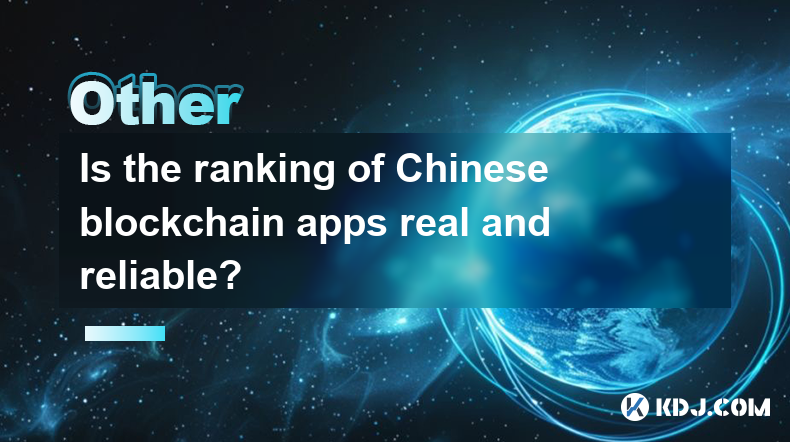
Is the ranking of Chinese blockchain apps real and reliable?
Apr 04,2025 at 09:01pm
The ranking of Chinese blockchain apps has become a topic of interest for many in the cryptocurrency community, as it provides insights into the popularity and adoption of blockchain technology within China. However, the reliability and authenticity of these rankings are often questioned. This article aims to delve into the factors that influence these ...
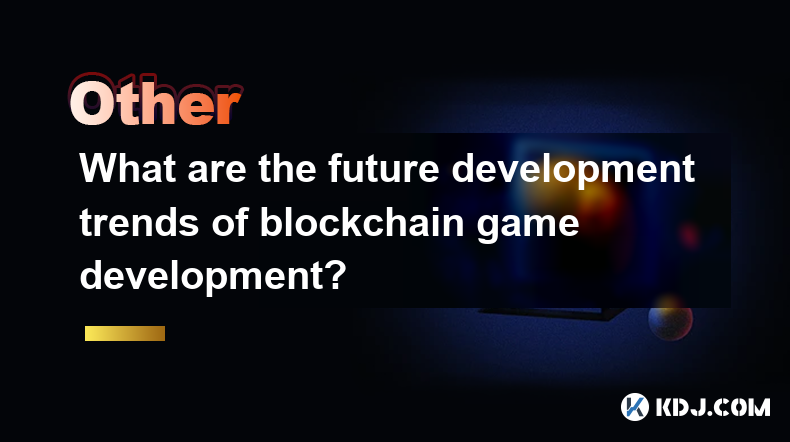
What are the future development trends of blockchain game development?
Apr 03,2025 at 05:00am
Blockchain technology has revolutionized various industries, and gaming is no exception. As we look to the future, several trends are set to shape the development of blockchain games. These trends not only promise to enhance the gaming experience but also to integrate blockchain technology more seamlessly into the gaming ecosystem. Let's explore these t...
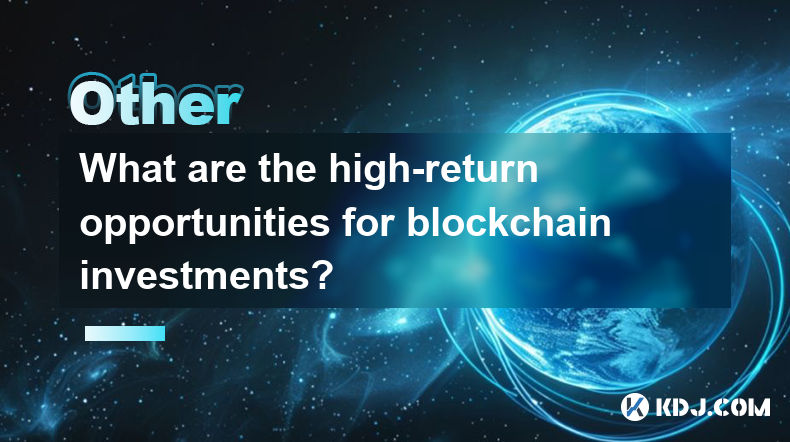
What are the high-return opportunities for blockchain investments?
Apr 05,2025 at 02:35pm
Blockchain technology has revolutionized the financial world, offering numerous high-return investment opportunities. These opportunities span various sectors within the cryptocurrency ecosystem, including cryptocurrencies, decentralized finance (DeFi), non-fungible tokens (NFTs), and blockchain startups. Each of these areas presents unique risks and re...
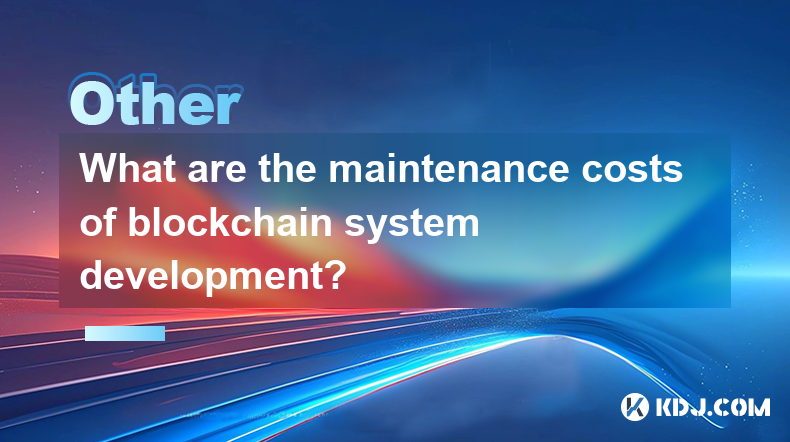
What are the maintenance costs of blockchain system development?
Apr 03,2025 at 06:07pm
The maintenance costs of blockchain system development are multifaceted and depend on various factors. These costs can include technical maintenance, security updates, infrastructure expenses, and personnel costs. Understanding these elements is crucial for anyone planning to develop or maintain a blockchain system. Technical MaintenanceTechnical mainte...
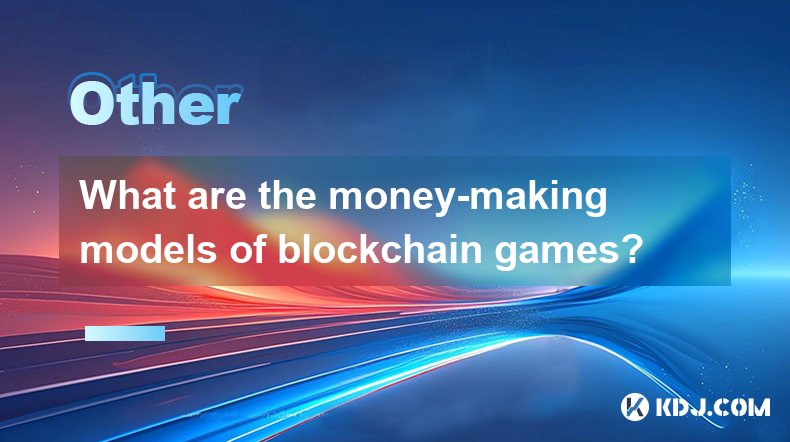
What are the money-making models of blockchain games?
Apr 04,2025 at 02:00pm
Blockchain games have emerged as a revolutionary way for players to earn real money while enjoying their favorite pastime. These games leverage the power of blockchain technology to create unique money-making models that benefit both the players and the developers. In this article, we will explore the various money-making models of blockchain games and ...
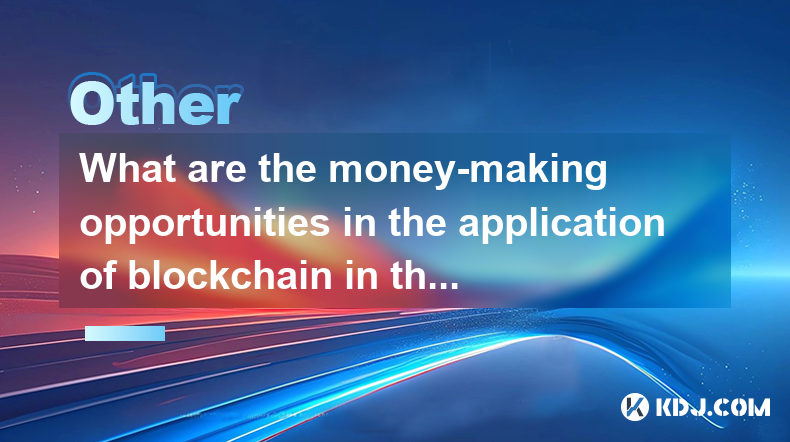
What are the money-making opportunities in the application of blockchain in the field of Internet of Things?
Apr 05,2025 at 10:35pm
The integration of blockchain technology with the Internet of Things (IoT) presents numerous money-making opportunities. Blockchain, with its decentralized and secure nature, can revolutionize how IoT devices interact, manage data, and conduct transactions. This article will explore various avenues where entrepreneurs, developers, and investors can capi...

Is the ranking of Chinese blockchain apps real and reliable?
Apr 04,2025 at 09:01pm
The ranking of Chinese blockchain apps has become a topic of interest for many in the cryptocurrency community, as it provides insights into the popularity and adoption of blockchain technology within China. However, the reliability and authenticity of these rankings are often questioned. This article aims to delve into the factors that influence these ...

What are the future development trends of blockchain game development?
Apr 03,2025 at 05:00am
Blockchain technology has revolutionized various industries, and gaming is no exception. As we look to the future, several trends are set to shape the development of blockchain games. These trends not only promise to enhance the gaming experience but also to integrate blockchain technology more seamlessly into the gaming ecosystem. Let's explore these t...

What are the high-return opportunities for blockchain investments?
Apr 05,2025 at 02:35pm
Blockchain technology has revolutionized the financial world, offering numerous high-return investment opportunities. These opportunities span various sectors within the cryptocurrency ecosystem, including cryptocurrencies, decentralized finance (DeFi), non-fungible tokens (NFTs), and blockchain startups. Each of these areas presents unique risks and re...

What are the maintenance costs of blockchain system development?
Apr 03,2025 at 06:07pm
The maintenance costs of blockchain system development are multifaceted and depend on various factors. These costs can include technical maintenance, security updates, infrastructure expenses, and personnel costs. Understanding these elements is crucial for anyone planning to develop or maintain a blockchain system. Technical MaintenanceTechnical mainte...

What are the money-making models of blockchain games?
Apr 04,2025 at 02:00pm
Blockchain games have emerged as a revolutionary way for players to earn real money while enjoying their favorite pastime. These games leverage the power of blockchain technology to create unique money-making models that benefit both the players and the developers. In this article, we will explore the various money-making models of blockchain games and ...

What are the money-making opportunities in the application of blockchain in the field of Internet of Things?
Apr 05,2025 at 10:35pm
The integration of blockchain technology with the Internet of Things (IoT) presents numerous money-making opportunities. Blockchain, with its decentralized and secure nature, can revolutionize how IoT devices interact, manage data, and conduct transactions. This article will explore various avenues where entrepreneurs, developers, and investors can capi...
See all articles





















































































